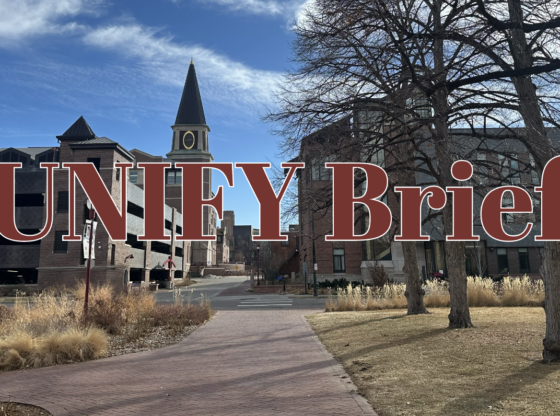The foggy Saturday morning on Oct. 14 did not subdue the triumphant tone of the Solar Decathlon 2017 award ceremony as the final awards were announced and all the participants—each representing different parts of the U.S. and the world spanning from Denver to the Netherlands—rejoiced over their two years of hard work.
The combined DU and University of California, Berkeley team won third place ($150,000) overall behind the University of Maryland, who finished in second place ($225,000), and the Swiss team, which was composed of students from multiple Swiss universities, taking the lead ($300,000).
The Solar Decathlon is a biennial collegiate competition in which universities are tasked to construct a fully functioning home that is sustainable, solar-powered and sets the stage for displaying the potential homes may have in the future. The competition has existed since 2002 and this year’s event was hosted in Denver by the 61st and Peña light rail station. There, guests could visit the village of competition homes and enter each one and receive a tour from the students themselves.
Each home was built with a target audience and theme in mind. The DU/UC Berkeley team, who coined their home’s name as R.I.S.E. (Residential Inviting Stackable Efficient), targeted their home for families in the San Francisco Bay area in search of affordable housing.
“We’re trying to hit the affordable market in Richmond, California so we’re trying to do it on a budget… that’s definitely the major theme we were trying to push for,” admitted Christopher Landsinger, a DU graduate student majoring in real estate development.
DU joined UC Berkeley in the competition to assist with the real-world implementation of the house and determining how UC Berkeley’s concepts would translate in the construction process.
“[DU] came into play basically at the beginning of the year,” explains Landsinger, “DU, our real estate school did a lot of constructability design reviews and really figured out whether it could be built and what needed to be changed.”
Working within the guidelines set by the Decathlon, the team innovated new strategies for R.I.S.E. to increase the sustainability of their home. A feature unique to the home was its ability to have multiple units stack on top or beside one another. This is meant to be a solution to the national housing crisis for the high-density design, satisfying the need for energy efficiency, affordability and sustainability.
Another touch is the house’s walls were insulated with wool which creates a higher indoor air quality, does not exert harmful chemicals, has good moisture control properties and has a high resistance to fire. After the lifetime of the home, the wool can then be composted.
To Landsinger, the easily movable walls were his personal favorite part of the home, praising its ability to expand the living area, thus allowing flexibility to the 816-square-foot home.
Aside from the overall first, second and third place awards, the teams were evaluated in ten other contests in juried and measured categories including: architecture, market potential and water. DU/UC Berkeley’s highest rankings were in measured categories such as Health and Comfort—where houses had to maintain a steady temperature and good air quality, Appliances—determining whether a home is mimicking the appliance use of an average American home, Home Life Contest—evaluating a home’s livability factor (social gatherings, watching TV, enjoying a meal, etc.) and Energy—the measurement of a team’s energy production and energy value.
After the Decathlon, the house is going to Denver Habitat for Humanity on a temporary lot. Once the permanent lot is completed, the home will then be sold to a family in need.
For further information on the competition, the other teams or more details on R.I.S.E, visit the Solar Decathlon’s website.











